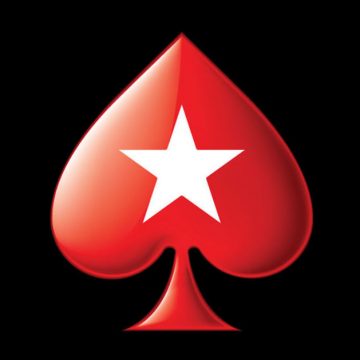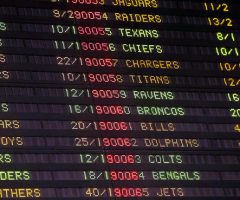
PokerStars announced today it would match funds dollar-for-dollar in PKR.com player accounts. PKR customers only need to transfer their money to a PokerStars account in order to cash out their winnings. The announcement ends two months of speculation about what would become of PKR poker funds.
In announcing the decision, PokerStars said PKR players would have “no play-through” and “no obligations” incurred at the world’s number one poker site.
Players with PokerStars accounts should be able to access funds and make withdrawals within minutes. New players to PokerStars receive the same offer, with no obligations to play on the site.
PokerStars: No Obligations or Wagering Requirement
Those without a PokerStars account will need to create an account and undergo the usual verification process. Once that is complete, player funds will be available for cashouts, with no terms and conditions or promotional hurdles to jump.
The key passage in the press release for PKR players, PokerStars said, “aim and intention is to make funds available for withdrawal as quickly as possible. There will be no further obligation or play-through required. There are no strings attached.”
Thus ends a 63-day period when PKR.com players wondered whether it would take years to see their cash — or whether they would see it at all. For the close-knit poker community at PKR, the announcement that player funds were short came as a bombshell in May 2017. Those who followed PKR throughout 2016 and 2017 knew financial trouble was coming, but not in the way it happened.
PKR Timeline and History
PKR.com was an online cardroom which launched in June 2006. The poker site was different than many competitors, because it used 3D video graphics and adaptive software to produce a virtual reality setting. PKR used body language, facial expressions, seeming poker tells, and chip tricks to create an immersive gaming atmosphere which simulated live poker better than many competitors.
PKR’s administrators fostered a sense of community on their site, including Q&A sessions with top executives (and even the CEO). The site’s software included player tools which were integrated into rival platforms eventually, such as graphs that monitor chip levels during tournaments. Despite the solid reputation for innovative software and customer service, PKR’s business side was not as efficient or visionary.
The Rise and Fall of PKR
At its peak, PKR had a player community of over 5 million gamblers. In peak hours, over 15,000 poker players would be online. Despite a large gaming community, PKR struggled with a series of market setbacks. The trouble was not apparent at first.
For instance, PKR seemed to weather the financial fallout of the UIGEA. It pulled out of the US market in late 2006, but had its peak years from 2007 to 2009. PKR signed an exclusive software deal with Playtech in 2007. The site hosted its first live tournament in November 2008. By December 2009, its live tournaments included famous items from their 3D software client. The brand was unique and popular.
European Regulations Hurt the Site
Despite the good reviews, PKR’s technical functionality sometimes faltered. The site was slower than PokerStars and other top poker sites. Players could not multi-table. Even players who loved the site admitted it had flaws. Despite that, PKR became a good place to learn how to play poker, so it held a nice in the online poker market.
When several Western European countries regulated their poker markets and barred many foreign companies, it led to serious financial strain for the company. Dan O’Callaghan, a former PKR pro, described the site’s troubles to CalvinAyre.com, saying, “The whole thing was a slow painful death. The site was hit hard when all of the Belgian, Spanish, French and whoever else started to move to their individual markets. That hit the traffic hard, and when those players left, numbers dropped massively.”
PKR’s Financial Death Spiral
Once the financial trouble began, PKR’s executives’ reactions led to further financial strain. Those executives focused on cash games and their casino site, because these generated most of the revenues. They focused less on tournaments, which hurt the size of the player community over time. Instead of financial overlays during bad times to assure the kind of large guaranteed winnings casual poker players seek, PKR decided to lower guaranteed prize pools. This led to a big drop in the number of casual players, which in turn led to lower prize pools.
Eventually, PKR was offering “expected prize pools” instead of guaranteed prize pools. That was certain to hurt tournament entries. As Dan O’Callaghan put it, “There was now $20 tournaments, with 2k expected prize pools, but only $500 guarantees. And I think when people saw $200 up top, they just moved. Let’s face it, recreational players are the heartbeat of online poker, and they don’t want to play for $200, they want to gamble and chase the big scores.”
Attempts were made to retrieve the sitaution. In 2016, PKR joined the Microgaming Poker Network, in the hope it would increase player liquidity. Executives sought outside investment to turn around the financial picture and offer bigger prize pools, but it never materialized.
PKR Shuts Down Amidst “Financial Difficulties”
On May 3, PKR.com shut down, citing financial difficulties. On May 5, the Alderney Gambling Control Commission (AGCC) said that a May 4th deadline for renewing PKR’s gaming license had passed without a payment.
Subsequently, the AGCC suspended the 3D poker site’s license and said they would “liaise with our regulatory colleagues” at the UK Gambling Commission. PKR held dual licenses with the AGCC and UKGC, so the case went before the UK High Court, which appointed RSM Restructuring Advisory as administrators of the PKR companies (PKR Ltd and PKR Technologies Ltd).
PKR T&C Page: “Funds Would Not Be Protected”
While Vladimir “Beyne” Geshkenbein promised that the player funds were segregated properly, Microgaming Head of Poker, Alex Scott, caused many concerns when he said the ultimate decision would be up to the court-appointed administrators. In short, creditors likely would receive payment before customers.
As the story of PKR’s closing spread, one clause on the PKR Terms & Conditions page was cited often: “In the case of insolvency, these funds {the players} would not be protected.”
This led to a reasonable panic. For a playing community which felt more close-knit than the big brand name online cardrooms, that clause felt like a betrayal. The only time a player needed to worry about their funds was “in the case of insolvency”, so every other promise seemed bogus.
PokerStars Covers PKR Player Funds
Thus, it comes as a great relief that PokerStars announced it would match the PKR player funds dollar-for-dollar. Players with PokerStars accounts will be able to move all their money into their account with a few clicks. Those without a PokerStars account will need to register an account and verify their identity. Once this happens, they’ll be able to withdraw funds with no questions asked.
The press release from PokerStars added, “Those players who don’t already have an account with us, will simply need to open a new account and their funds will be available to them for withdrawal. Transactions will, of course, be subject to the usual agreed terms regulating Stars Account (for instance, we are having ongoing conversations with some regulators about payment of funds).
“We expect that some players will choose to use that bankroll to play with us and we will gain some new customers, which is certainly a good business decision on our part. However, the motivation behind this move is simple: to do what’s right.”
Opinion on PokerStars/PKR Decision
Like the FullTilt Poker scandal, PokerStars saves the day for card players. While the decision is good public relations and is certain to win PokerStars some new customers, it is not a self-interested move. PokerStars is covering the poker funds for 60,000 card players. That’s a big cost, even for a billion-dollar company. A solid number of players are certain to open an account and cash out instantly, so it’s not pure gain for PokerStars.
Poker Sites Which Stiffed Players
This is not the first time an online poker site failed to cover player funds. In several cases, the site did not segregate funds properly, which is expected of any legitimate gaming site. Cardrooms should keep their operating funds separate from player funds, so the site can cover all player withdrawals at any given time. Anything less is bad business. One of the arguments for poker regulation is the insistence by regulators that sites segregate player funds.
FullTilt Poker Player Funds Scandal
One of the most famous cases where a site stiffed its players already was mentioned. After the Black Friday Scandal of April 15, 2011, FullTilt Poker revealed it had not segregated player funds. The site was founded and organized by famous poker players like Chris “Jesus” Ferguson and Howard Lederer. Those players came under intense online criticism and, in some cases, were indicted for embezzlement by the U.S. Justice Department. One US official accused FTP’s executives of running a “Ponzi scheme”.
Eventually, PokerStars bought FullTilt Poker and covered FTP player funds. Like the PKR.com situation, PokerStars saved the day and collected a large number of new customers. FullTilt Poker continued as its own brand for several years, but eventually was merged into the PokerStars community. In the 2017 World Series of Poker, Ferguson and Lederer entered the WSOP No-Limit Hold’em Tag Team Championship as a team. All these years later, that move was enough to infuriate online poker players caught up in the Black Friday scandal.
Absolute Poker Player Funds Scandal
Less lucky were the players with Absolute Poker accounts. Like PokerStars and FullTilt Poker, Absolute Poker was one of the sites caught up in the Black Friday investigations. Absolute Poker’s domain was seized and two of its executives, Brent Beckley and Scott Tom, were indicted for violations of the UIGEA federal law. Ira Rubin, who was hired by Absolute Poker as a payment processor, also was indicted.
On December 20, 2011, Brent Beckley pleaded guilty to conspiracy to commit bank fraud and wire fraud. In June 2012, Brent Beckley was sentenced to 14 months in federal prison (he served 10 months). Ira Rubin was sentenced to 3 years in prison. Absolute Poker co-founded Scott Tom did not turn himself in to US authorities until late 2016. He pleaded guilty to a misdemeanor count in February 2017 and awaits sentencing on September 28, 2017. Scott Tom can expect a much lighter sentence than Brent Beckley or Ira Rubin.
Prosecution for PKR Executives?
It is not expected that PKR executives will face prosecution due to the site’s inability to pay back player funds. If reports are correct, those funds were segregated and available, though the UK High Court-appointed administrator decided where those funds went. If the administrator handed those to creditors and not customers, that is not the responsibility of the PKR.com executives.
Whatever the case, all former PKR.com poker players have access to their full account. PokerStars should be thanked for covering the expenses. Whether it’s a business decision, a PR move, or an act of charity, the customers involved in the PKR.com insolvency case don’t lose money.















